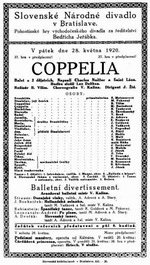
The founding of the National Theatre in 1920 sparked a series of events that led to the creation of its own ballet company. However, a new challenge arose: The absence of a domestic ballet school after the dissolution of the Austro-Hungarian monarchy. Undeterred, the company, with its remarkable resilience and adaptability, found a solution by inviting Czech dancers and choreographers to assist in the newly established republic.
The collaboration with Czech dance artists, which began in the early years, continued to grow and evolve over the years. This ongoing partnership saw an increasing number of Slovak artists joining in, leading to the formal culmination in 1961 when the Slovak choreographer Karol Tóth assumed the role of artistic director of the Slovak National Theatre Ballet. Even then, the cooperation between Slovak and Czech artists persisted, shaping the history of the ballet company.
The introductory chapter is connected with the initial formation of the ballet company at the Slovak National Theatre. It is mainly dominated by the names of Václav Kalina, Achille Viscusi, and Ella Fuchsová-Lehotská and can be dated from 1920 to 1940.
The second chapter covers the period from 1940 to 1945, during which choreographer Maximilian Froman's name prevails.
The third chapter of the ballet company's history is a period of significant dynamism, encompassing two distinct time and problem areas. This chapter can be further defined by specific years and events.
The years 1945-1948 marked a transitional period during which the ballet company at the Slovak National Theatre was stabilised. The subsequent years, 1948-1960, were a period of intensive development, during which the artistic activity of the Slovak National Theatre Ballet flourished. The ensemble progressed through several artistically distinct stages, from Stanislav Remar's tenure to the intervals of Jozef Zajko and Milan Herényi, culminating in the arrival of Karol Tóth in 1961 after his studies in Moscow, which symbolically closed this chapter of the ensemble's history.
The fourth chapter covers the period 1960-1990. It is a long and artistically complex chapter. The SND Ballet profiled itself in the line of successive artistic directors: Karol Tóth, Boris Slovák, Karol Tóth, and Emil Tomáš Bartko, whose activity dates all the way to the present day.
The fifth and so far, the last chapter began loosely in 1990. It is characterised not only by the emergence of a new generation of Slovak choreographers, represented by the names Igor Holováč and Ján Ďurovčík. Ondrej Šoth and Libor Vaculík began their choreographic careers in Slovakia through intensive collaboration with foreign choreographers and ballet masters, as well as international confrontation of the interpretive ambitions of Slovak dancers. At the same time, it is a period of the emergence of a new generation of performers, not only from the domestic school but also from abroad, whose artistic potential has been confirmed on the stage of the Slovak National Theatre.
INTRODUCTION
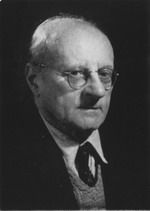
The first artistic director of the SND Ballet was Václav Kalina, a Czech dancer, who presented the ballet Coppélia by Léo Delibes on 19 May 1920. The ensemble was miniature, and they had to rely on amateur singers and an opera chorus. The first soloist was Eugénia Metznerová and Václav Kalina, and Miloš Pokorný danced the male roles. The ballet The Fairy Doll by Joseph Bayer expanded the scope of the ballet's repertoire. After two seasons, from 1920 to 1922, the Czech dancer Marta Aubrechtová took his place for the 1922/23 season. She recreated Coppélia, dancing Swanilda herself, with Ada Janíková dancing Franz. The most exciting event of 1923 was the concert of the famous Russian dancer Tamara Karsavinova with her partner Peter Vladimirov on May 5, 1923. The foundation of the first ballet company in Slovakia is associated with the names of Václav Kalina and Marta Aubrechtová.
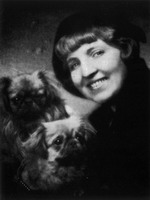 In the 1923/24 season, Achille Viscusi arrived at the invitation of the director of the Slovak National Theatre, Oskar Nedbal. His activity played a decisive role in stabilising the ballet company and building a solid repertoire. Viscusi was already an experienced creator, performer, excellent organiser and teacher. He was best characterised by the Czech ballet critic Vladimír Vašut: "... Italian by birth, an artist by nature, a world traveller by virtue of his life, and a Czech at heart." He became a co-founder of two ballet companies (after twelve years as head of the Prague National Theatre) - the Ostrava and the Bratislava companies. His eight-year tenure at the Slovak National Theatre epitomises the consistent professionalisation of Slovak ballet. The company's needs were met with the help of a private ballet school. He changed the ensemble from the ground up and strengthened it with dancers who came with him from Ostrava. In doing so, he created the opportunity to build a repertoire that, although it cannot be called avant-garde, was functional, purposeful and effective. It featured works of the Czech society of composers - From Fairy Tale to Fairy Tale, The Tale of John, Princess Hyacinth, Andersen by Oskar Nedbal, Slavonic Dances by Antonín Dvořák (under the title A Year in the Village), as well as essential works from world ballet literature such as The Swan Lake, The Nutcracker by Pyotr I. Tchaikovsky, Giselle by Adolphe Ch. Adam and Scheherazade by Nikolay A. Rimsky-Korsakov, Sylvia by Léo Delibes and others.
In the 1923/24 season, Achille Viscusi arrived at the invitation of the director of the Slovak National Theatre, Oskar Nedbal. His activity played a decisive role in stabilising the ballet company and building a solid repertoire. Viscusi was already an experienced creator, performer, excellent organiser and teacher. He was best characterised by the Czech ballet critic Vladimír Vašut: "... Italian by birth, an artist by nature, a world traveller by virtue of his life, and a Czech at heart." He became a co-founder of two ballet companies (after twelve years as head of the Prague National Theatre) - the Ostrava and the Bratislava companies. His eight-year tenure at the Slovak National Theatre epitomises the consistent professionalisation of Slovak ballet. The company's needs were met with the help of a private ballet school. He changed the ensemble from the ground up and strengthened it with dancers who came with him from Ostrava. In doing so, he created the opportunity to build a repertoire that, although it cannot be called avant-garde, was functional, purposeful and effective. It featured works of the Czech society of composers - From Fairy Tale to Fairy Tale, The Tale of John, Princess Hyacinth, Andersen by Oskar Nedbal, Slavonic Dances by Antonín Dvořák (under the title A Year in the Village), as well as essential works from world ballet literature such as The Swan Lake, The Nutcracker by Pyotr I. Tchaikovsky, Giselle by Adolphe Ch. Adam and Scheherazade by Nikolay A. Rimsky-Korsakov, Sylvia by Léo Delibes and others.
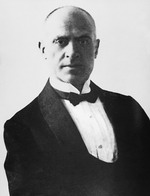
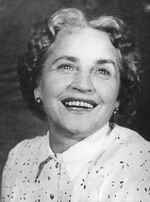 With Oskar Nedbal's tragic death, the successful tenure of the Italian Achille Viscusi in Bratislava was interrupted. In 1931, he left the stage of the Slovak National Theatre. Viscusi's place was taken by his student, the dancer Ella Fuchsová-Lehotská, who continued his previous artistic path between 1931 and 1933. She premièred the ballets Nicotine by Vítězslav Novák, m by Igor F. Stravinsky and Mr. Twardowski by Ludomir Róźycký. Her work at the East Slovak National Theatre, where she established a ballet troupe with her partner Viktor Jassik in 1924, and in her own private ballet school, she made a significant contribution to the history of Slovak ballet.
With Oskar Nedbal's tragic death, the successful tenure of the Italian Achille Viscusi in Bratislava was interrupted. In 1931, he left the stage of the Slovak National Theatre. Viscusi's place was taken by his student, the dancer Ella Fuchsová-Lehotská, who continued his previous artistic path between 1931 and 1933. She premièred the ballets Nicotine by Vítězslav Novák, m by Igor F. Stravinsky and Mr. Twardowski by Ludomir Róźycký. Her work at the East Slovak National Theatre, where she established a ballet troupe with her partner Viktor Jassik in 1924, and in her own private ballet school, she made a significant contribution to the history of Slovak ballet.
Among the names of the soloists, besides Ella Fuchs-Lehotská, there are artists such as Oľga Janatová-Doušová, Ria Astrová, Božena Holoubková, Anděla Křístková, Alžbeta and Irma Vécsey, Tamar Corpona, Viktor Jassik, Miloš Pokorný, Ivo Richard Stuchlý, Jindřich Jercký, Karel Křeček, and Emerich Gabzdyl.
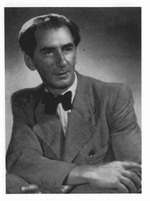 This very successful phase was followed by other Czech choreographers in short intervals. In 1933 - 1935, Vladimir Pirnikov performed the ballet Raymonda by Alexander K. Glazunov, then again Ella Fuchsová-Lehotská in 1935 - 1937 with Ajanta's Frescoes by Alexander N. Tcherepnin, and finally, in 1937 - 1940 seasons, Bohumil Relský with A Christmas Eve Dream by Moritz S. Anger, Wedding in Ukraine by Otto Fröhlich, and other ballets. The dance ensemble had other soloists in its midst - Edita Kováčová, Nina Pirnikovová, Vladimír Libovický and others. Under Relský, the soloist was his wife, Mária Chocová, followed by Ella Velínska, Gréta Schmidtová, Eva Šajová-Teplá and Antonín Landa.
This very successful phase was followed by other Czech choreographers in short intervals. In 1933 - 1935, Vladimir Pirnikov performed the ballet Raymonda by Alexander K. Glazunov, then again Ella Fuchsová-Lehotská in 1935 - 1937 with Ajanta's Frescoes by Alexander N. Tcherepnin, and finally, in 1937 - 1940 seasons, Bohumil Relský with A Christmas Eve Dream by Moritz S. Anger, Wedding in Ukraine by Otto Fröhlich, and other ballets. The dance ensemble had other soloists in its midst - Edita Kováčová, Nina Pirnikovová, Vladimír Libovický and others. Under Relský, the soloist was his wife, Mária Chocová, followed by Ella Velínska, Gréta Schmidtová, Eva Šajová-Teplá and Antonín Landa.
1940 - 1945
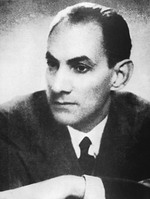 The period from 1940 to 1945 is associated with the name of the chief of the ballet company Maximilian Froman, a representative of the outstanding Russian ballet school and a member of the world-famous Sergei Diaghilev's Ballets Russes company, who also performed in Zagreb and Belgrade before coming to Bratislava. He presented the ballets to the audience in the form he knew from his time with Diaghilev. He staged the ballets Scheherazade, Les Papillons and Polovetz Dances by Robert Schumann, Alexander P. Borodin, Fryderyk Chopin's Les Sylphides (The Fairies) and The Sleeping Beauty by Pyotr I. Tchaikovsky. He also presented the Slovak premières of ballets by the Croatian composer Kresimir Baranovic, The Gingerbread Heart and Imbrek with a Nose. The era of Maximilian Froman is associated with the emergence of the young Bulgarian dancers Maria Vasileva, Bedrich Füssegger, Alice Illyova, and Izabella Cernochova.
The period from 1940 to 1945 is associated with the name of the chief of the ballet company Maximilian Froman, a representative of the outstanding Russian ballet school and a member of the world-famous Sergei Diaghilev's Ballets Russes company, who also performed in Zagreb and Belgrade before coming to Bratislava. He presented the ballets to the audience in the form he knew from his time with Diaghilev. He staged the ballets Scheherazade, Les Papillons and Polovetz Dances by Robert Schumann, Alexander P. Borodin, Fryderyk Chopin's Les Sylphides (The Fairies) and The Sleeping Beauty by Pyotr I. Tchaikovsky. He also presented the Slovak premières of ballets by the Croatian composer Kresimir Baranovic, The Gingerbread Heart and Imbrek with a Nose. The era of Maximilian Froman is associated with the emergence of the young Bulgarian dancers Maria Vasileva, Bedrich Füssegger, Alice Illyova, and Izabella Cernochova.
1945 - 1948
The transitional period brings us an almost identical situation as at the beginning of the existence of the Slovak National Theatre Ballet. However, at that time, our theatre was much better developed than at the beginning. During the years 1945-1948, not only the ballet company at the Bratislava Slovak National Theatre but also at the Košice State Theatre stabilised. Despite this, the lack of capable personnel, creative personalities and performers was evident. There was no institutional school system. Practically only the school of Ella Fuchs-Lehotská prepared something professionally, but this was disproportionately insufficient for the needs of the theatres.
Once again, the help came from Czech ballet circles. The decisive initiatives are those of Stanislav Remar and Rudolf Macharovský, with whom performers such as Jitka Mňačková, Miroslav Kůra, Dagmar Ledecká, Magdaléna Pánovová, Galina Basová and Karol Šrom have appeared. Let us add Tamara Isichenko, Jozef Hare and the incoming students from the school of Ella Fuchs-Lehotská, Augusta Starostová, Gertrúda Mucksteinová and Katarína Gratzerová.
Rudolf Macharovský took over the management of the SND ballet company for the seasons 1946-1948 after the short-lived performances of Bedrich Füssegger, Tamar Corpona, the not-very-successful performance of Jaroslav Häusler and the end of Ella Fuchs-Lehotská in the period 1945-1946. During his tenure, he strengthened the existence of the ballet company and performed, among others, The Swan Lake, Italian Capriccio by Pyotr I. Tchaikovsky, Carnival and Scheherazade. It was in Carnival that the now legendary Miroslav Kůra excelled as Harlequin. At the same time, in the 1947/48 season, Miroslav Kůra appeared as a choreographer with the première of the ballets Rhapsody in Blue by George Gershwin, Bolero by Maurice Ravel and the then top artistic work, the ballet Petrushka by Igor F. Stravinsky in the title role proving to be an excellent performer both dramatically and technically. With the departure of Rudolf Macharovský, a new era, already presented by Stanislav Remar, has begun. Stanislav Remar debuted as a choreographer in June 1947 with the ballet Stuff and nonsence!, which featured Jozef Zajko in the title role.
1948 - 1960
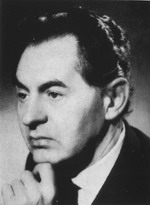
The period from 1948 to 1960 needs to be subdivided according to the individual chapters of the corpus. The ballet company went through two periods. The first was the artistic direction of the ensemble by Stanislav Remar from 1948 to 1955, marking the dramaturgy of the ensemble's repertoire. First of all, it was the staging of the first Slovak ballets by composer Tibor Andrašovan
Orpheus and Eurydice on March 12, 1949, and
The Peace Song on February 22, 1950. S. Remar performed, in the then Czech-Slovak premières, the great Russian ballets of Boris V. Asafiev's
The Flames of Paris and
Bachchisaray Fountain and the Slovak premières Sergei S. Prokofiev's ballets
Cinderella and
Romeo and Juliet.
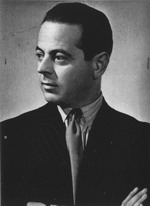
Of course, the SND Ballet also performed other works of accessible ballet literature on a broader repertoire range. To those years, it is also necessary to attribute the first guest appearance of foreign choreographers - a representative of the Russian school, Alexander R. Tomsky with The Red Poppy by Reingold M. Glier, 1954, the head of the Hungarian Ballet Gyula Harangozó with Jenö Kenessey's The Kerchief, 1955, and the then still domestic guest Jiří Blažek with the ballet Pyotr I. Tchaikovsky's The Nutcracker, 1956.
The seven seasons of Stanislav Remar at the Slovak National Theatre marked a significant period in its recent history, which he successfully developed in his next position—in the ballet of ŠD Košice. After his departure, there was artistic stagnation and dramaturgical inconsistency, a minor crisis for the whole ensemble. Jozef Zajko and Milan Herényi were in charge from 1955 to 1957 and 1957 to 1960, respectively. Both were previously soloists of the Slovak National Theatre Ballet.
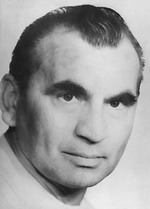
Among the positives of these years is undoubtedly the establishment of the first Slovak theatre choreographer, Jozef Zajko. He performed the ballet
From Fairy Tale to Fairy Tale on January 28, 1956, and for the first time on our stages, he performed the ballet
The Ball of the Cadets by Johann Strauss based on the play Psota etc. by Ivo Váňa. He concluded his career with an original Slovak ballet, practically the first ballet with a Slovak theme - Šimon Jurovský's
Ballad of the Knights on June 10, 1960. Interesting productions included the first performance of Sergei S. Prokofiev's ballet
The Stone Flower, again with guest Alexander R. Tomsky. The arrival of Karol Tóth as an artistic director in the 1960/61 season brought this chapter to a close. It brought with it a more fundamental independence of the ballet company from the opera. The soloist positions were filled by such names as
Tamara Isicenko, Galina Basova, Augusta Herényiová-Starostová, Jarmila Manšingrová, Gertrúda Tašká-Boudová, Jitka Mňačková, Jozef Zajko, Tibor Beňo, František Oldřich Bernatík, Milan Herényi, Vladimír Marek, Ladislav Lejko, Peter M. Rapoš and Henrich Volejníček.
1960 - 1990
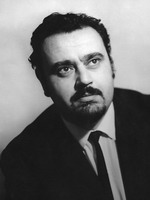 Karol Tóth's appointment to his first period of artistic direction of the Slovak National Theatre Ballet (1960-1972) confirms, first of all, the ballet company's independence among the companies of the Slovak National Theatre. He introduced himself as a choreographer as a GITIS student with the ballet Fadetta to the music of Léo Delibes in 1958. During his direction, Marilena Tóthová and Jozef Zajko also participated in the formation of the repertoire. Among Karol Tóth's most important productions are the Czechoslovak premières of the original works Ikaros by Tibor Andrašovan, The Ninth Wave by Karel Odstrčil, as well as the ballets Pilgrimage in the Storm (originally titled The Way of Thunder) by Abdulfaz K. Karaev, Sergei S. Prokofiev's Scythian Suite and Don Quijote by Ludwig A. Minkus.
Karol Tóth's appointment to his first period of artistic direction of the Slovak National Theatre Ballet (1960-1972) confirms, first of all, the ballet company's independence among the companies of the Slovak National Theatre. He introduced himself as a choreographer as a GITIS student with the ballet Fadetta to the music of Léo Delibes in 1958. During his direction, Marilena Tóthová and Jozef Zajko also participated in the formation of the repertoire. Among Karol Tóth's most important productions are the Czechoslovak premières of the original works Ikaros by Tibor Andrašovan, The Ninth Wave by Karel Odstrčil, as well as the ballets Pilgrimage in the Storm (originally titled The Way of Thunder) by Abdulfaz K. Karaev, Sergei S. Prokofiev's Scythian Suite and Don Quijote by Ludwig A. Minkus.
Then there were ballets presented in Slovak premières - the original Slovak ballet Rozkaz (original title Hiroshima) to the music of the composer Viliam Bukový, The Servant of Two Masters by Jarmil Burghauser, Snow White and The Seven Dwarfs by Zbyněk Vostřák, from the Czech ballet provenance. Alongside them from the world repertoire are Igor F. Stravinsky's The Rite of Spring, Manuel de Falla's Wondrous Love, George Gershwin's An American in Paris, Sergei S. Prokofiev's Peter and the Wolf, etc.
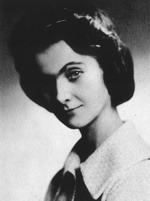
Choreographed by Marilena Tóthová, the Czechoslovak premières of the ballets Doctor Jajbolí by Igor V. Morozov, The Girl and the Hooligan and Dmitri D. Shostakovich's Dance Suite, as well as the Slovak premières of Dmitri D. Shostakovich's Leningrad Symphony, Johann Strauss's Straussiana, Sergei V. Paganini's Paganini, V. Rachmaninov, Charles Gounod's Walpurgis Night, Claude Debussy's Toy Box, etc. Other performances include the works of the choreographer Jozef Zajko, such as Maurice Ravel's Daphnis and Chloe, Béla Bartók's The Miraculous Mandarin, Francesca da Rimini by Piotr I. Tchaikovsky and others.
This period is associated with the performances of excellent interpreters Augusta Herényiová, Žofia Červeňáková, Florentina Lojeková, Titus Pomšár, Andrej Halász, Tomáš Ivan, Ján Haľama, and later also Jozef Dolinský. The ballet dramaturgy was characterised by a relatively broad genre spectrum - from world classics to Russian works, local originals and more modern world titles. At the turn of the 1960s and 1970s, the country's social situation led to a significant decline in the ballet company's artistic activity and the departure of several dancers abroad. The lengthy reconstruction of the historic building of the Slovak National Theatre also had a negative impact.
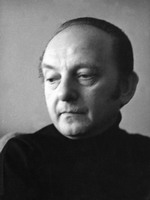
In 1973, Boris Slovák took over the direction of the ensemble and significantly rejuvenated and expanded the ensemble. Several choreographers, both local and foreign, had a significant influence on the shaping of the repertoire up to 1980. The premières from the workshop of Boris Slovák were the original Preludio eroico by Michal Vilec and an exciting version of the well-known Carmen by George Bizet and Rodion K. Shchedrin. Jozef Zajko staged The Fountain of Bakhchisarai, Louis J. F. Hérold's La fille mal gardee after Frederick Ashton, Cinderella and others. Among the guest choreographers, it was primarily Pavel Šmok with Confidential Letters to the music of Leoš Janáček and Igor S. Stravinsky's The Firebird, which caused a political scandal. The Slovak originals were introduced by Štefan Nosáľ: Ei, Hussars by Svetozár Stračina (original première at Lúčnica) and Ján Gouth: Ballad of a Tree by Milan Novák (original première in VUS).
Two other guests transferred two productions from their parent companies. The Hungarian choreographer Sándor Tóth chose An Evening with Mahler from the repertoire of the Sophianae ensemble from Pécs (it had three parts—Ballet Symphony, Screams, and Circle Dance) to the music of Gustav Mahler, and the Czech choreographer Miroslav Kůra transferred a scenically appealing interpretation of Romeo and Juliet from the repertoire of the National Theatre in Prague.
In addition to these masters, there were three young Slovak choreographers, graduates of the Dance Department of HaTF VŠMU, who were competing for their future positions: Miroslav Štauder with Pygmalion by Jiří A. Benda, Jozef Sabovčík with Anna Karenina by Rodion K. Shchedrin, Jozef Dolinsky with Petrushka. At the turn of the 1970s and 1980s, the artistic directors changed again, and in 1980, Karol Tóth returned to the leading position for the second time. Even before that, in 1979, he presented the Czechoslovak première of Ottorino Respighi's ballet fantasia Roman Fountains.
The period under the direction of Boris Slovák was characterised by an effort towards a more modern tendency in terms of the choice of means of movement and expression and terms of the directorial concept. A new and younger generation of performers has made a significant entrance. The leading performers include Gabriela Záhradníková, Danica Pilzová, Viera Zlochová, Michaela Černá, Eva Šenkýříková, Zuzana Innemanová, Zoltán Nagy, Jurij P. Plavnik, Petr Dúbravík, Dušan Nebyla and Libor Vaculík.
Karol Tóth was the director of the SND Ballet from 1980 to 1989. He continues in the line of his previous work. Musical works by Slovak composers, originally not intended for ballet audiences, were brought to the stage. The Witching Night and Poème Macabre by Eugen Suchoň and The Incantations by Ilya Zeljenko under the title Triptych of Life, The Soldier and the Mother by Jan Cikker choreographed by Karol Tóth and Metamorphoses by Eugen Suchoň choreographed by Jozef Dolinský. After the Ostrava première by Zdeněk Prokeš, the original ballet by Tibor Frešo, A Beetle Was Born, choreographed by Jozef Zajko, and the first Slovak ballet with a new title Eternal Orpheus by the doyen of choreographers, Stanislav Remar, were brought to the domestic stage.
Titles from the former Soviet Union had the upper hand. It was the world première of the ballet Kirill V. Molčanov's Three Cards, choreographed by Jozef Dolinský, who was also responsible for the Slovak premières of works such as Igor F. Stravinsky's Prodigal Son and The Government Inspector by Alexander B. Tchaikovsky. The Czechoslovak première of Alexei D. Mačavariani's utterly failed Othello was left for the end. Jozef Sabovčík choreographed the production. The mandatory productions of The Legend of Love (Jozef Zajko), an adapted version of The Swan Lake (Karol Tóth) and The Nutcracker according to Vasily I. Vajnonen, but in a German staging by Egon Bischoff (with assistant Ursula Heinrich-Petzold) and the stage-impressive Spartacus by Aram I. Khachaturian in the staging by Otar M. Dadishviliani. Among the more successful productions were Karol Tóth's ballets The Rite of Spring, the Czechoslovak première of Maurice Jarre's The Hunchback of Notre-Dame, obviously based on Roland Petit. However, it was not listed in the programme bulletin, and it was an excellent composition by the Cuban Iván Tenorio, The House of Bernarda Alba, set to the music of Sergio F. Barros. Die Fledermaus [The Bat] by Johann Strauss, choreographed by Karol Tóth, was appealing to the audience, but artistically without any significant impact. In addition to the aforementioned guest appearances by Egon Bischoff, Otar M. Dadishviliani and Iván Tenorio, Miroslav Kůra, a celebrating sixty-year-old, presented the first production of Bohuslav Martinů's children's ballet The Little Chalice, Slovenian Henrik Neubauer presented an unsuccessful performance of Fran Lhotka's The Devil in the Village and Olga Skálová with Chopiniana.
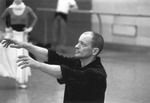
The repertoire is completed by the ballet Grand Pas from the ballet Paquita, choreographed by Karol Tóth and the ballet Daphnis and Chloe by Jozef Dolinský. Let us conclude this period with four ballet premières that present the state of the art at the extremes of the period. The state of dramaturgical stagnation, the exclusion of young creators who demonstrate a solid performance in competitions from the artistic operation, formally modified "transfers" of original works, the lack of quality performers, even in the context of the classical exchange of generations, and so on. The two premières were given by a group of young performers from the Slovak National Theatre under the direction of Libor Vaculík. The first première was a four-part evening called What a Man Tells Me, What Love Tells You, set to music by Antonio Vivaldi, Gustav Mahler, Bohuslav Martinů and choreographed by the previously mentioned Libor Vaculík, who was also an excellent performer in a wide range of styles.
The staging of a two-part ballet fantasy by young choreographers known as Lux et Requiem was a performance masterpiece. The pair of choreographers were Robert Balogh in the first part, which consisted of Ecstasy of the Spirit set to music by Wolfgang A. Mozart, and Ondrej Šoth in the second part with the Requiem by Giuseppe Verdi. This première was a violent contradiction of the previously existing status of the SND Ballet.
The absurdity of limiting the arrival of new creators was confirmed by the première of the more experienced ones - Jozef Dolinský with The Miraculous Mandarin and Miroslav Štauder with the new Cyrano de Bergerac by Jozef B. Foerster, which was without any artistic essence. The spirit came with the second première of the group of young dancers, already in connection with the prospective arrival of the new creative director Emil T. Bartko, conducted by Libor Vaculík.
The evening with the title "V" for Vivaldi was composed of two winning works from the national choreographic competitions (1985, 1988) "V" for Vivaldi" and The Dusk (also The Love Game), as well as the original piece In Memoriam by Vladimír Godár, accompanied by Dialogues (Love, Death, and Others) to the music of Gustav Mahler, Joaquín Rodrigo choreographed by Libor Vaculík and Discrepancy to the music of Martin Burlas choreographed by Igor Holováč.
1990- 2015
Emil Tomáš Bartko, a critic and theoretician, was the creative director of the SND Ballet from May 1989. The ballet's dramaturgy focused on introducing original and contemporary works. The result was two original works by Ondrej Šoth - Special Joy of Living to the music of Michal Pavlíček and The Light in the Darkness to the music of Michal Ničík. Libor Vaculík staged the ballet The Lady with Camellias to a musical collage by Franz Liszt and Richard Wagner and the highly successful children's ballet musical The Snow White and the Seven Racers to the music by Václav Patejdel. The production was complemented by a contemporary dance production by the Frenchman Bruno Genty, entitled Words from the Mouths of Angels. Mark Diamond from the USA introduced Magnificat with music by Johann S. Bach, Igor Holováč performed Quartet for One by Ilya Zeljenka, and Etienne Frey from Switzerland presented an evening of contemporary choreography Les Mutants. Another American, former New York City Ballet soloist Christopher d'Amboise, who staged a ballet with the Slovak composer Dušan Rapoš with the anti-drug theme The Children of the Titanic, concluded these trends. The national premières were extended by Igor Stravinsky's ballets The Wedding and The Firebird, choreographed by Pavel Šmok. World classics were represented by the works of the guest lecturer Rafael G. Avnikian's The Swan Lake in the original version by the Mariinsky Theatre of St. Petersburg, as well as Louis J. F. Hérold and Peter L. Hertel's La fille mal gardée and Ludwig A. A. Minkus, The Nutcracker.
For the 75th anniversary of the Slovak National Theatre, the ballet performed works from the repertoire of the Ballets Russes: the ballets Carnival choreographed by Kůra, Paganini choreographed by Jaroslav D. Secha by Leonid M. Lavrovsky and Scheherazade by Mikhail M. Fokine in the staging by the legendary Nicholas Beriozoff. Jozef Dolinský staged the ballet Coppélia and Igor Holováč with Ján Ďurovčík the children's ballet From Fairy Tale to Fairy Tale. This was followed by a triptych inspired by folklore - Musica slovaca (Ilya Zeljenka, Vladimír Marušin), Enchanted Love (Manuel de Falla, Igor Holováč), The Rite of Spring (Igor F. Stravinsky, Ján Ďurovčík).
In the course of seven years, other new generations of performers have emerged, such as Irina Čierniková, Nora Gallovičová, Ingrid Murčeková-Kačiaková, Andrea Svobodová, Nikoleta Stehlíková, and Jozef Dolinský Jr, Jozef Goga, Igor Holováč, Juraj Šiška, Juraj Vasilenko, as well as Mário Radačovský, Lívia Hýllová, Michal Zábavík and Roman Lazík, who brought the first medal from the world competition in New York in 1996, and others.
From 1996, the SND Ballet was briefly led by Gabriela Záhradníková (November 1996 - September 1997) and, after her, by Jozef Sabovčík (September 1997—December 1999). The ballet presented the following productions: Dance of the Cadets, Grand Pas from the ballet Paquita, Carmen, and Andersen. The two-year period closed with the ballet Spartacus choreographed by Jozef Sabovčík (1998).
In 1999, Emil Bartko returned to the post of director. Ballet classics were represented by Giselle, The Nutcracker, and staged by Rafael G. Avnikian. The ballet presented renewed premières of masterpieces - Scheherazade and Magnificat, Classical Symphony. They performed Carl Orff's Carmina Burana and Giuseppe Verdi's Requiem and Mahler's Adagietto choreographed by Ondrej Šoth. Jozef Dolinský younger choreographed the première of the ballet fantasy Wish to the music of Henry Tóth. The SND Ballet celebrated its eightieth anniversary with a gala concert of soloists from the SND Ballet and its guests - soloists from Budapest, Moscow, Paris, Prague and Vienna theatres.
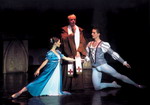
The next stage began in 2001 with the première of Sergei S. Prokofiev's most crucial ballet work, Romeo and Juliet, choreographed by Riccardo Duse and Jozef Dolinský to the choreography of N. Beriozoff. The second première was Maurice Jarre's ballet The Hunchback of Notre Dame, choreographed by Libor Vaculík. The third evening was dedicated to the original ballet fairy tale A Beetle was Born with music by Tibor Frešo in a new choreographic and directorial adaptation by Igor Holováč (collaboration with the librettist Nikita Slovák). The soloist line-up is completed by names such as Eva Jenčková, Lucia Holečková, Alena Kršková, Viktória Šimončíková, Cosmina M. Zaharia. This artistic breakthrough was followed by two grand classical opuses, staged in a way that respects the original concepts. The first opus is The Sleeping Beauty, directed by Bakhram M. Yuldashev and Jozef Dolinský, and the second is the Slovak première of La Bayadere, directed by Rafael Avnikjan and Karin Alaverdjan. The world première of the ballet Rasputin by the choreographer Ján Ďurovčík and the composer Henrich Leško opens the ballet stage of the Slovak National Theatre to other original works, such as Caligula from the creative workshop of Holováč - Leško and Spartacus choreographed by Ďurovčík. Both works were premièred in the 2003/2004 season. The Slovak première of Béla Bartók's ballet The Wooden Prince in contemporary choreography by the Hungarian guest Tamás Juronics - in a joint opera-ballet project with the opera Prince Bluebeard's Castle - was an addition to the programme. The interpretive power of the ensemble was complemented by a new generation of soloists - Veronika Henschová, Eva Petráková, Nina Poláková, Martin Blahuta, Jaroslav Černuška, Andrej Kremz, Roman Novitzky and Tomoko Nomura, Sandra Mühlbauer-Peron, Marina Zheleznyaková and Adrian Ducin from abroad.
The 85th anniversary season brought the first performances of the ballets Corsair A. Adam in the staging by R. G. Avnikian and B. M. Yuldashev and Sylphide (H. S. Løvenskjold with original choreography by A. Bournonville with Niels Kehlet), as well as the Gala Concert '85 on the occasion of the eighty-fifth anniversary of the first performance of the SND Ballet - 19 May 2005. The 2005/2006 season brought two works inspired by literary themes - A Midsummer Night's Dream, set to the music of Peter Zagar and choreographed by the Swiss Etienne Frey, and the ballet Don Juan set to the music of Mirek Krajči and choreographed by Igor Holováč.
2006 - 2010
Since October 2006, Mário Radačovský, former soloist of Nederlands Danse theater and Grand Ballets Canada, has led the SND Ballet and the new season brought two titles from the originally prepared dramaturgical plan: the dance theatre Warhol and the children's musical Cinderella. The next two seasons expanded the repertoire to include works by masters of world choreography - Serenade and Pas de deux (Tchaikovsky) by the choreographer George Balanchine. Jiří Kylián, one of the most influential personalities of world choreography, staged two works from the repertoire of Nederlands Dans Theater for the first time at the Slovak National Theatre Ballet: Un Ballo with music by M. Ravel and Six Dances to music by W. A. Mozart.
The repertoire was supplemented by original works by Mario Radačovský - ´68 (a musical collage from the works of J. S. Bach and Wolfgang A. Mozart) Bolero and two duets: Meeting with a Swan by P. I. Tchaikovsky and Suzanne to music by G. Mahler - along with works by NDT creators - Real Time by Lukáš Timuľák and Susto by the distinguished choreographic duo of Paul Lightfoot and Sole León. At that time, the SND Ballet was also presenting Grand pas Classique from the ballet by Raymond A. Glazunov, choreographed by Johnny Chang, and Ivan the Terrible by Sergei S. Prokofiev, choreographed by Libor Vaculík. A new version of The Nutcracker, which is an original libretto choreographed by Fernand Nault from Montreal, was presented to the youngest audience.
This was followed by the original project Everest - to the music of Pavel Hammel, choreographed by Mário Radačovský and directed by Patrik Lančarič. Renowned Canadian choreographer James Kudelka presents an evening of Made in: Canada consisting of two works - Four Seasons to the music of Antonio Vivaldi and 15 Heterosexual Duets to the music of Ludwig van Beethoven.
2010 - 2012
From May 2010, the SND Ballet was led by Vlastimil Harapes, a long-time soloist and head of the National Theatre Ballet in Prague. This stage opens with the première of a new version of Giselle choreographed by J. Kubanko, N. Horečná, M. Novikov, O. Šoth and L. Zhytnykova. The evening entitled Made in Slovakia brings four original ballets and four choreographers of the younger generation to the stage of the Slovak National Theatre - Šárka Ondrišová (4man), Jaroslav Ivanenko (Birthday), Ján Ševčík (Call on!) and Igor Holováč (Angels Above the City).
In May 2011, Andrej Suchanov, a soloist of the State Theatre Košice Ballet, took up the post of director. The repertoire of the season consists of Ondrej Šoth's ballets The Little Prince (M. Pavlíček) and Ulysses (M. Kocáb). Highlights of this period include an evening of a neoclassical ballet called Duo, consisting of works by world-renowned masters Nacho Duato - Duende (C. Debussy) and Uwe Scholz - Symphony No. 2 (R. Schumann). The end of Suchanov's career includes a classic opus - The Sleeping Beauty, choreographed by Vladimir Malakhov.
The interpretive power of the ensemble is represented by the soloists Barbora Kubátová, Silvia Najdená, Romina Kołodziej, Viola Mariner, Juraj Žilinčár, Andrej Szabo, Oliver Jahelka and guest soloists from Košice E. Jenčková-Sklyarová, S. Jegorov, M. Sklyar.
2012 - 2020
At the beginning of the 2012/2013 season, Jozef Dolinský, younger, the long-time protagonist of the SND Ballet, was appointed to the position of director with the vision of building a company that would be able to perform great classical titles and also give space to original works. The season opened with a renewed première of the romantic ballet Sylphide, directed by Niels Kehlet. The event of the season was the première of the ballet drama Romeo and Juliet (S. Prokofiev), choreographed and directed by the Italian guest choreographer Massimo Moricone; the company then performed it in several Italian cities, including at the Shakespeare Festival in Rome.
To expand the production for children, they presented a renewed première of the ballet fairy tale A Beetle Was Born (T. Frešo) choreographed by Igor Holováč and Tchaikovsky's ballet The Nutcracker choreographed by Rafael Avnikjan and Jozef Dolinský to choreography by Vasily Vajnonen.
The SND Ballet has opened up to other genres and creators from the independent scene. In an effort to expand its audience, especially to young viewers, it is presenting a co-production project, Julio and Romea, choreographed by Laci Strike and directed by Sona Ferancová.
The première of the ballet A Midsummer Night's Dream (F. Mendelshon-Bartholdy) was presented on the stage of the Slovak National Theatre by a prominent European creator - Yuri Vámos. In order to give space to local creators and contemporary trends, the ballet premièred The Tempest (J. Vlk, P. Zagar), which was directed by three Slovak creators - Stanislava Vlčeková, Jaroslav Viňarský, Andrej Petrovič - under the direction of Jozef Vlk. The jubilee season opened with the première of Eugen Suchoň's ballet Angelika, choreographed by Mauro de Candia. The season was completed by the première of Oskar Nedbal's children's title, From Fairy Tale to Fairy Tale, and the première of the ballet epic A. Adam's The Corsair, choreographed by Vasily Medvedev after Marius Petipa.
In parallel with the premières, the SND Ballet has developed several projects - it organises Art for Life, a gala evening in support of the National Theatre of the NOÚ [The National Cancer Institute]. As part of the Guests of the SND Ballet project, the company regularly invites ballet companies from Slovakia and abroad - the highlight of the 2013/2014 season was the guest appearance of the Eifman Ballet from St. Petersburg with the production Rodin and the next season featured a production of Up & Down. The SND Ballet continues the Contemporary Dance in the SND project, which was created to support the independent contemporary dance scene in Slovakia. In 2014, in cooperation with the KTT VŠMU, the Choreographic Studio project was created as a platform for creating and performing original works.
Towards the end of 2015, the SND Ballet Preparatory School was established in an effort to support the development of ballet art with a focus on preschool and younger children who subsequently participated in some ballet productions.
The line of original works is well represented by the productions Carmen à la Gypsy Devils (G. Bizet/E. Sarközi) choreographed by Laco Cmorejo, Angelica (E. Suchoň/R. Pepucha) choreographed by Mauro de Candia, Slovak Dances - The Lives of Lights (P. Breiner) and Romeo and Juliet - Just Like Yesterday (S. Prokofiev) choreographed by Natalia Horečná, BESS - Homage to Rudolf Laban (P. Zagar) choreographed by Šarka Ondrišová, Beatles go Baroque (P. Breiner) - a composed evening in five parts choreographed by Reona Sato, Andrej Petrovic, Glen Lambrecht, Adrian Ducin and Igor Holováč, and Daphnis and Chloé (M. Ravel) choreographed by Reona Sato.
The productions Nijinsky - The God of Dance and Chaplin the Tramp - A Tribute to Genius, choreographed by Daniel de Andrade in collaboration with composer Carl Davis, form a separate chapter. Both productions were staged at world premières. The treatment of Dostoyevsky's novel in Boris Eifman's dance production Beyond the Borders of Sin/The Brothers Karamazov (musical collage) is enjoying great audience interest. In 2018, the company's classical repertoire was enhanced with the ballet Esmeralda (C. Pugni), directed by Vasily Medvedev and Stanislav Feč. In the 2019/2020 season, a duo of authors also staged the popular ballet Don Quixote (C. Pugni).
Erina Kaminaka, Olga Chelpanova, Romina Kolodziej, Tatum Schoptaugh, Konstantin Korotkov, Yuki Kaminaka, Andrei Szabo, Artemy Pyzhov, Mariia Pyzhova, Viacheslav Krut, Sarah Millner, Viola Mariner, Luana Brunetti, Reona Sato and others represent the ensemble's interpretive strength.
2021
The plans for the Jubilee season were interrupted by the worldwide pandemic of the covid-19 disease. After almost a year-long paralysis of the ballet company, the artistic direction of the SND Ballet was taken over by Nina Poláková, the long-time leading soloist of the Vienna State Ballet.
The SND Ballet's vision is to join the ranks of the major European stages and to translate the richness of the historical classical legacy as well as the traditions of Slovak ballet into the current form of the 21st century.
The SND Ballet is ambitious about presenting artistic creations within a wide spectrum of dance aesthetics, giving space to representatives of several generations of choreographers and performers with an emphasis on original works. The company's dramaturgical line is currently focused on works of classical ballet literature, which are complemented by neoclassical and contemporary ballet works. We place great emphasis on the children's audience. The company cooperates closely with the Eva Jaczová Dance Conservatory in Bratislava and the Department of Dance Production of the Academy of Performing Arts in Bratislava.
 In the 1923/24 season, Achille Viscusi arrived at the invitation of the director of the Slovak National Theatre, Oskar Nedbal. His activity played a decisive role in stabilising the ballet company and building a solid repertoire. Viscusi was already an experienced creator, performer, excellent organiser and teacher. He was best characterised by the Czech ballet critic Vladimír Vašut: "... Italian by birth, an artist by nature, a world traveller by virtue of his life, and a Czech at heart." He became a co-founder of two ballet companies (after twelve years as head of the Prague National Theatre) - the Ostrava and the Bratislava companies. His eight-year tenure at the Slovak National Theatre epitomises the consistent professionalisation of Slovak ballet. The company's needs were met with the help of a private ballet school. He changed the ensemble from the ground up and strengthened it with dancers who came with him from Ostrava. In doing so, he created the opportunity to build a repertoire that, although it cannot be called avant-garde, was functional, purposeful and effective. It featured works of the Czech society of composers - From Fairy Tale to Fairy Tale, The Tale of John, Princess Hyacinth, Andersen by Oskar Nedbal, Slavonic Dances by Antonín Dvořák (under the title A Year in the Village), as well as essential works from world ballet literature such as The Swan Lake, The Nutcracker by Pyotr I. Tchaikovsky, Giselle by Adolphe Ch. Adam and Scheherazade by Nikolay A. Rimsky-Korsakov, Sylvia by Léo Delibes and others.
In the 1923/24 season, Achille Viscusi arrived at the invitation of the director of the Slovak National Theatre, Oskar Nedbal. His activity played a decisive role in stabilising the ballet company and building a solid repertoire. Viscusi was already an experienced creator, performer, excellent organiser and teacher. He was best characterised by the Czech ballet critic Vladimír Vašut: "... Italian by birth, an artist by nature, a world traveller by virtue of his life, and a Czech at heart." He became a co-founder of two ballet companies (after twelve years as head of the Prague National Theatre) - the Ostrava and the Bratislava companies. His eight-year tenure at the Slovak National Theatre epitomises the consistent professionalisation of Slovak ballet. The company's needs were met with the help of a private ballet school. He changed the ensemble from the ground up and strengthened it with dancers who came with him from Ostrava. In doing so, he created the opportunity to build a repertoire that, although it cannot be called avant-garde, was functional, purposeful and effective. It featured works of the Czech society of composers - From Fairy Tale to Fairy Tale, The Tale of John, Princess Hyacinth, Andersen by Oskar Nedbal, Slavonic Dances by Antonín Dvořák (under the title A Year in the Village), as well as essential works from world ballet literature such as The Swan Lake, The Nutcracker by Pyotr I. Tchaikovsky, Giselle by Adolphe Ch. Adam and Scheherazade by Nikolay A. Rimsky-Korsakov, Sylvia by Léo Delibes and others.
 With Oskar Nedbal's tragic death, the successful tenure of the Italian Achille Viscusi in Bratislava was interrupted. In 1931, he left the stage of the Slovak National Theatre. Viscusi's place was taken by his student, the dancer Ella Fuchsová-Lehotská, who continued his previous artistic path between 1931 and 1933. She premièred the ballets Nicotine by Vítězslav Novák, m by Igor F. Stravinsky and Mr. Twardowski by Ludomir Róźycký. Her work at the East Slovak National Theatre, where she established a ballet troupe with her partner Viktor Jassik in 1924, and in her own private ballet school, she made a significant contribution to the history of Slovak ballet.
With Oskar Nedbal's tragic death, the successful tenure of the Italian Achille Viscusi in Bratislava was interrupted. In 1931, he left the stage of the Slovak National Theatre. Viscusi's place was taken by his student, the dancer Ella Fuchsová-Lehotská, who continued his previous artistic path between 1931 and 1933. She premièred the ballets Nicotine by Vítězslav Novák, m by Igor F. Stravinsky and Mr. Twardowski by Ludomir Róźycký. Her work at the East Slovak National Theatre, where she established a ballet troupe with her partner Viktor Jassik in 1924, and in her own private ballet school, she made a significant contribution to the history of Slovak ballet. This very successful phase was followed by other Czech choreographers in short intervals. In 1933 - 1935, Vladimir Pirnikov performed the ballet Raymonda by Alexander K. Glazunov, then again Ella Fuchsová-Lehotská in 1935 - 1937 with Ajanta's Frescoes by Alexander N. Tcherepnin, and finally, in 1937 - 1940 seasons, Bohumil Relský with A Christmas Eve Dream by Moritz S. Anger, Wedding in Ukraine by Otto Fröhlich, and other ballets. The dance ensemble had other soloists in its midst - Edita Kováčová, Nina Pirnikovová, Vladimír Libovický and others. Under Relský, the soloist was his wife, Mária Chocová, followed by Ella Velínska, Gréta Schmidtová, Eva Šajová-Teplá and Antonín Landa.
This very successful phase was followed by other Czech choreographers in short intervals. In 1933 - 1935, Vladimir Pirnikov performed the ballet Raymonda by Alexander K. Glazunov, then again Ella Fuchsová-Lehotská in 1935 - 1937 with Ajanta's Frescoes by Alexander N. Tcherepnin, and finally, in 1937 - 1940 seasons, Bohumil Relský with A Christmas Eve Dream by Moritz S. Anger, Wedding in Ukraine by Otto Fröhlich, and other ballets. The dance ensemble had other soloists in its midst - Edita Kováčová, Nina Pirnikovová, Vladimír Libovický and others. Under Relský, the soloist was his wife, Mária Chocová, followed by Ella Velínska, Gréta Schmidtová, Eva Šajová-Teplá and Antonín Landa. The period from 1940 to 1945 is associated with the name of the chief of the ballet company Maximilian Froman, a representative of the outstanding Russian ballet school and a member of the world-famous Sergei Diaghilev's Ballets Russes company, who also performed in Zagreb and Belgrade before coming to Bratislava. He presented the ballets to the audience in the form he knew from his time with Diaghilev. He staged the ballets Scheherazade, Les Papillons and Polovetz Dances by Robert Schumann, Alexander P. Borodin, Fryderyk Chopin's Les Sylphides (The Fairies) and The Sleeping Beauty by Pyotr I. Tchaikovsky. He also presented the Slovak premières of ballets by the Croatian composer Kresimir Baranovic, The Gingerbread Heart and Imbrek with a Nose. The era of Maximilian Froman is associated with the emergence of the young Bulgarian dancers Maria Vasileva, Bedrich Füssegger, Alice Illyova, and Izabella Cernochova.
The period from 1940 to 1945 is associated with the name of the chief of the ballet company Maximilian Froman, a representative of the outstanding Russian ballet school and a member of the world-famous Sergei Diaghilev's Ballets Russes company, who also performed in Zagreb and Belgrade before coming to Bratislava. He presented the ballets to the audience in the form he knew from his time with Diaghilev. He staged the ballets Scheherazade, Les Papillons and Polovetz Dances by Robert Schumann, Alexander P. Borodin, Fryderyk Chopin's Les Sylphides (The Fairies) and The Sleeping Beauty by Pyotr I. Tchaikovsky. He also presented the Slovak premières of ballets by the Croatian composer Kresimir Baranovic, The Gingerbread Heart and Imbrek with a Nose. The era of Maximilian Froman is associated with the emergence of the young Bulgarian dancers Maria Vasileva, Bedrich Füssegger, Alice Illyova, and Izabella Cernochova. The period from 1948 to 1960 needs to be subdivided according to the individual chapters of the corpus. The ballet company went through two periods. The first was the artistic direction of the ensemble by Stanislav Remar from 1948 to 1955, marking the dramaturgy of the ensemble's repertoire. First of all, it was the staging of the first Slovak ballets by composer Tibor Andrašovan Orpheus and Eurydice on March 12, 1949, and The Peace Song on February 22, 1950. S. Remar performed, in the then Czech-Slovak premières, the great Russian ballets of Boris V. Asafiev's The Flames of Paris and Bachchisaray Fountain and the Slovak premières Sergei S. Prokofiev's ballets Cinderella and Romeo and Juliet.
The period from 1948 to 1960 needs to be subdivided according to the individual chapters of the corpus. The ballet company went through two periods. The first was the artistic direction of the ensemble by Stanislav Remar from 1948 to 1955, marking the dramaturgy of the ensemble's repertoire. First of all, it was the staging of the first Slovak ballets by composer Tibor Andrašovan Orpheus and Eurydice on March 12, 1949, and The Peace Song on February 22, 1950. S. Remar performed, in the then Czech-Slovak premières, the great Russian ballets of Boris V. Asafiev's The Flames of Paris and Bachchisaray Fountain and the Slovak premières Sergei S. Prokofiev's ballets Cinderella and Romeo and Juliet.
 Among the positives of these years is undoubtedly the establishment of the first Slovak theatre choreographer, Jozef Zajko. He performed the ballet From Fairy Tale to Fairy Tale on January 28, 1956, and for the first time on our stages, he performed the ballet The Ball of the Cadets by Johann Strauss based on the play Psota etc. by Ivo Váňa. He concluded his career with an original Slovak ballet, practically the first ballet with a Slovak theme - Šimon Jurovský's Ballad of the Knights on June 10, 1960. Interesting productions included the first performance of Sergei S. Prokofiev's ballet The Stone Flower, again with guest Alexander R. Tomsky. The arrival of Karol Tóth as an artistic director in the 1960/61 season brought this chapter to a close. It brought with it a more fundamental independence of the ballet company from the opera. The soloist positions were filled by such names as Tamara Isicenko, Galina Basova, Augusta Herényiová-Starostová, Jarmila Manšingrová, Gertrúda Tašká-Boudová, Jitka Mňačková, Jozef Zajko, Tibor Beňo, František Oldřich Bernatík, Milan Herényi, Vladimír Marek, Ladislav Lejko, Peter M. Rapoš and Henrich Volejníček.
Among the positives of these years is undoubtedly the establishment of the first Slovak theatre choreographer, Jozef Zajko. He performed the ballet From Fairy Tale to Fairy Tale on January 28, 1956, and for the first time on our stages, he performed the ballet The Ball of the Cadets by Johann Strauss based on the play Psota etc. by Ivo Váňa. He concluded his career with an original Slovak ballet, practically the first ballet with a Slovak theme - Šimon Jurovský's Ballad of the Knights on June 10, 1960. Interesting productions included the first performance of Sergei S. Prokofiev's ballet The Stone Flower, again with guest Alexander R. Tomsky. The arrival of Karol Tóth as an artistic director in the 1960/61 season brought this chapter to a close. It brought with it a more fundamental independence of the ballet company from the opera. The soloist positions were filled by such names as Tamara Isicenko, Galina Basova, Augusta Herényiová-Starostová, Jarmila Manšingrová, Gertrúda Tašká-Boudová, Jitka Mňačková, Jozef Zajko, Tibor Beňo, František Oldřich Bernatík, Milan Herényi, Vladimír Marek, Ladislav Lejko, Peter M. Rapoš and Henrich Volejníček. Karol Tóth's appointment to his first period of artistic direction of the Slovak National Theatre Ballet (1960-1972) confirms, first of all, the ballet company's independence among the companies of the Slovak National Theatre. He introduced himself as a choreographer as a GITIS student with the ballet Fadetta to the music of Léo Delibes in 1958. During his direction, Marilena Tóthová and Jozef Zajko also participated in the formation of the repertoire. Among Karol Tóth's most important productions are the Czechoslovak premières of the original works Ikaros by Tibor Andrašovan, The Ninth Wave by Karel Odstrčil, as well as the ballets Pilgrimage in the Storm (originally titled The Way of Thunder) by Abdulfaz K. Karaev, Sergei S. Prokofiev's Scythian Suite and Don Quijote by Ludwig A. Minkus.
Karol Tóth's appointment to his first period of artistic direction of the Slovak National Theatre Ballet (1960-1972) confirms, first of all, the ballet company's independence among the companies of the Slovak National Theatre. He introduced himself as a choreographer as a GITIS student with the ballet Fadetta to the music of Léo Delibes in 1958. During his direction, Marilena Tóthová and Jozef Zajko also participated in the formation of the repertoire. Among Karol Tóth's most important productions are the Czechoslovak premières of the original works Ikaros by Tibor Andrašovan, The Ninth Wave by Karel Odstrčil, as well as the ballets Pilgrimage in the Storm (originally titled The Way of Thunder) by Abdulfaz K. Karaev, Sergei S. Prokofiev's Scythian Suite and Don Quijote by Ludwig A. Minkus.




